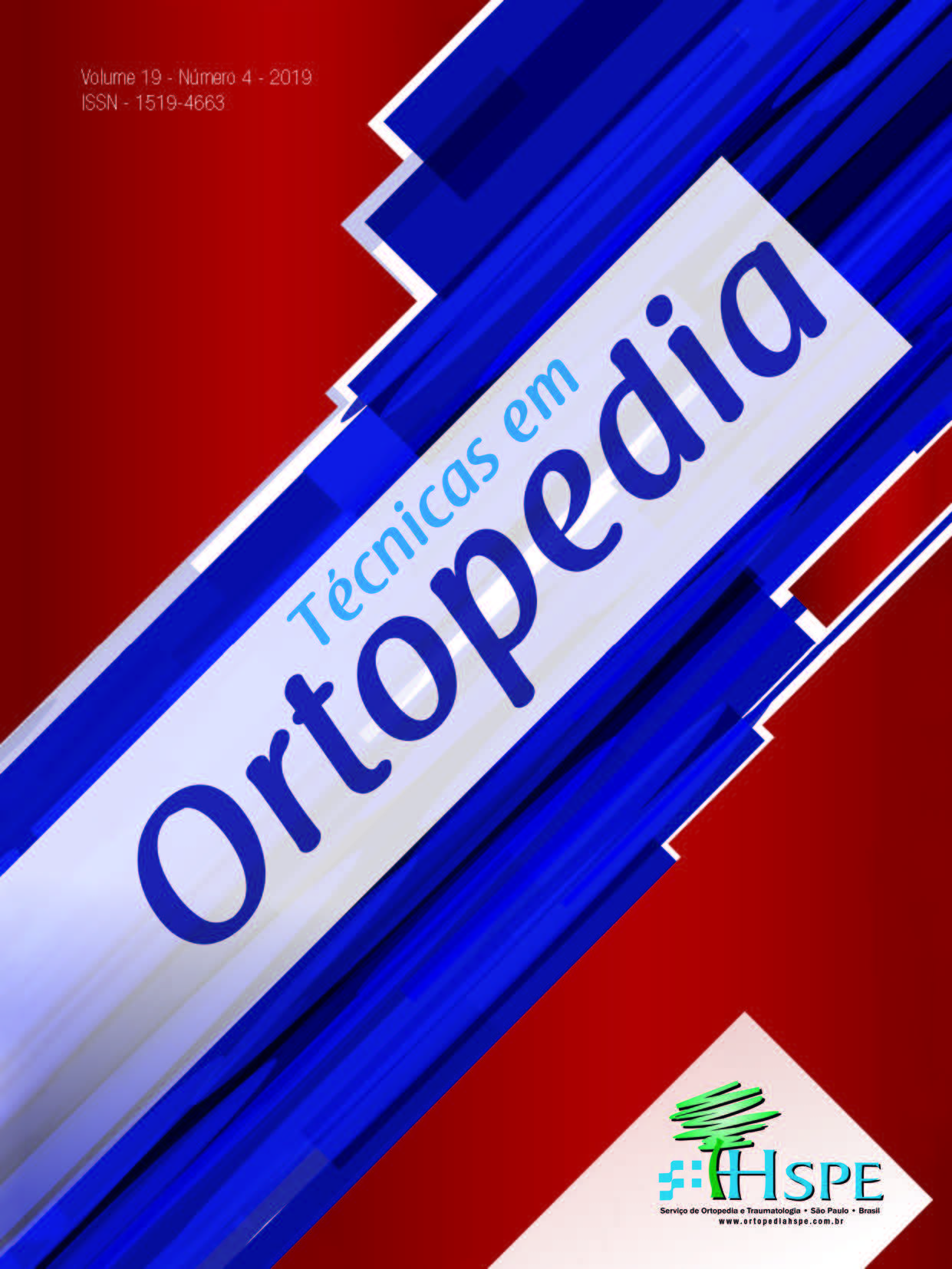Tratamento do hálux valgo com a técnica do chevron-Akin percutâneo
Keywords:
hallux valgus, minimally invasive surgery, rotational deformityAbstract
The present study demonstrates a case report using the chevron- Akin technique for percutaneous hallux valgus correction, considered the third generation of minimally invasive surgeries. There was a significant improvement in pain and function symptoms at 17 months postoperatively, with the result being considered excellent by the patient. The radiographic correction showed a variation of 33 degrees in the metatarsophalangeal angle and 12 degrees in the intermetatarsal angle. The osteotomy consolidated and there were no major or minor complications.
Downloads
References
Ferrari J, Higgins JP, Williams RL. Interventions for treating hallux valgus (abductovalgus) and bunions. Cochrane Database Syst Rev. 2000(2):CD000964.
Trnka HJ, Zembsch A, Easley ME, Salzer M, Ritschl P, Myerson MS. The chevron osteotomy for correction of hallux valgus. Comparison of findings after two and five years of follow-up. J
Bone Joint Surg Am. 2000;82(10):1373-8.
Maffulli N, Longo UG, Marinozzi A, Denaro V. Hallux valgus: effectiveness and safety of minimally invasive surgery. A systematic review. Br Med Bull. 2011;97:149-67.
Trnka HJ, Krenn S, Schuh R. Minimally invasive hallux valgus surgery: a critical review of the evidence. Int Orthop. 2013; 37(9):1731-35.
Bia A, Guerra-Pinto F, Pereira BS, Corte-Real N, Oliva XM. Percutaneous osteotomies in hallux valgus: a systematic review. J Foot Ankle Surg. 2018;57(1):123-30.
Roukis TS. Percutaneous and minimum incision metatarsal osteotomies: a systematic review. J Foot Ankle Surg. 2009; 48(3):380-7.
Vernois J, Redfern DJ. Percutaneous Surgery for Severe Hallux Valgus. Foot Ankle Clin. 2016;21(3):479-93.
Kitaoka HB, Alexander IJ, Adelaar RS, et al. Clinical rating systems for the ankle-hindfoot, midfoot, hallux, and lesser toes. Foot Ankle Int. 1997;18(3):187-8.
Lee M, Walsh J, Smith MM, Ling J, Wines A, Lam P. Hallux valgus correction comparing percutaneous chevron/akin (PECA) and Open Scarf/Akin Osteotomies. Foot Ankle Int. 2017;38(8):838-46.
Lai MC, Rikhraj IS, Woo YL, Yeo W, Ng YCS, Koo K. Clinical and radiological outcomes comparing percutaneous chevron-akin osteotomies vs open Scarf-Akin osteotomies for hallux valgus. Foot Ankle Int. 2018;39(3):311-7.
Frigg A, Zaugg S, Maquieira G, Pellegrino A. Stiffness and Range of Motion After Minimally Invasive Chevron-Akin and Open Scarf-Akin Procedures. Foot Ankle Int. 2019;40(5):515-25.





